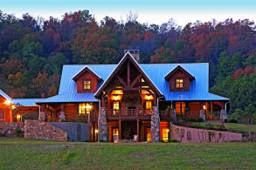
How does moisture content and settling affect my home’s energy efficiency?
There are many things that can affect the quality and energy efficiency of your log home. One that is often overlooked is how dry or how much water there is in your logs. This is referred to as moisture content. The drying process takes place when wood exchanges moisture with air. The rate and amount of dryness depends on the relative humidity and temperature of the air. This moisture relationship has an important influence on the quality and performance of your log home.
High moisture content in your logs can have a detrimental effect on the heating and cooling of your log home. If your logs have a moisture content above 12%, noticeable shrinking will occur as your logs dry out. Because the logs will shrink at different rates, gaps between the logs will slowly appear. Installing caulking and foam between the logs and chinking the exterior may help alleviate air leakage. However, all of these products have limits to their stretching and swelling abilities. The best way to prevent air infiltration in your log home, and increase its energy efficiency, is to buy logs that are dry before they are erected.
The optimum moisture content differs depending on your climate. An average of 12% or less in most areas of the U.S. dramatically minimizes potential air leaks because most, if not all, of the shrinkage has already occurred. With very minimal air leakage your log home is much easier to heat and cool because the conditioned air stays in your home.
When speaking with the log home companies of your choice, please remember to inquire about the moisture content of the logs your home will be built with, because dryer will always be better.
Published on: January 11th, 2018
Like what you read? Need more information? Achieving energy efficiency for you log homes goes beyond the logs. We've asked industry experts, Katahdin Cedar Log Homes to help with the answers. Click here to see more.











